2 signature pamphlet
You can see a gallery of photos illustrating the step to make a two-signature pamphlet binding here.
You can see a gallery of photos illustrating the step to make a two-signature pamphlet binding here.
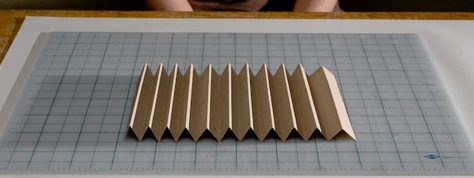
Concertina demo – brief demo showing how to fold the concertina pleat.
Tool and materials
Sheet of cover stock
Ruler
Pencil
Bone folder – is optional
Visit these photo galleries for ideas.
Once you finish these simple steps, you will have a concertina with 11 pleats. These photos demonstrate an easy approach. If you need real narrow concertina pleats, say less than half an inch wide, you may need to experiment with other methods. I will be happy to show you how to use the vandercook press to score your paper.
Image 1

Start with a sheet of paper 22 inches x 8 inches. Draw short marks every two inches along the top or long edge of the sheet. The marks will be used as folding guides. A two-inch interval will produce a concertina pleat that is one inch wide. The marks can be drawn at any desired spacing. Remember, that the pleats will be half the width of the spacing. This is will be cleared up in a few steps.
Image 2
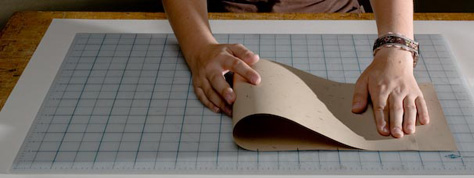
Once the marks have been drawn on the top of the sheet, take either side and fold the length toward the opposite edge of the sheet. In this photograph, the left edge is folded toward the first mark on the right side of the sheet and fold the sheet flat. Keep the top and bottom edges aligned and fold the paper straight down. The fold needs to be perfectly perpendicular to the long side.
Image 3
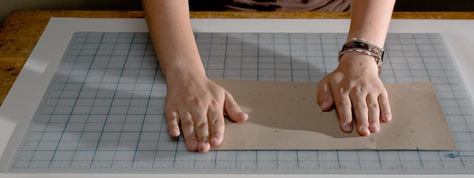
Next, move the left edge to the next mark, and again fold the sheet flat, keeping the paper aligned to create a perpendicular fold.
Image 4

Image 5
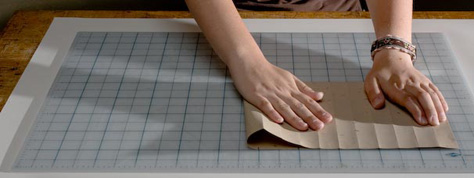
Image 6
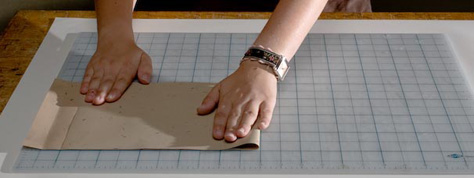
Repeat folding the sheet by moving the edge to the next mark until the end of the sheet is reached.
Image 7
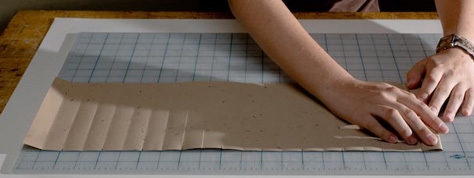
Continue making folds, aligning the marks, using the opposite side of the sheet until the sheet is folded every two inches. In this example, the sheet of paper will have 11 folded pleats.
Image 8
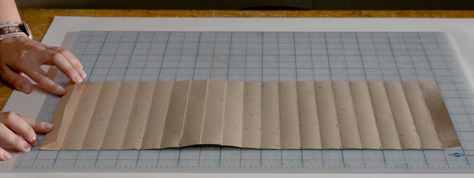
Image 9
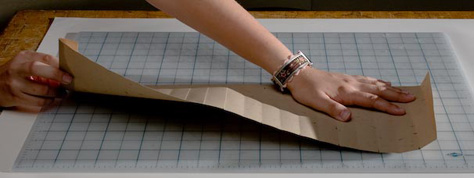
Image 10

Once all the folds have been made, the sheet needs to be folded back and forth to create the concertina. Start at one end and fold the paper forward at the first crease. Turn the paper over and fold again at the second crease. Repeat folding back and forth until all the folds are made.
Image 11
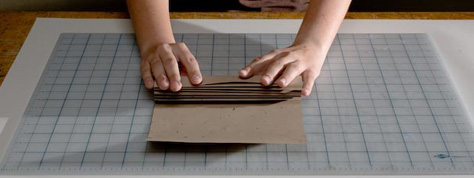
Image 12
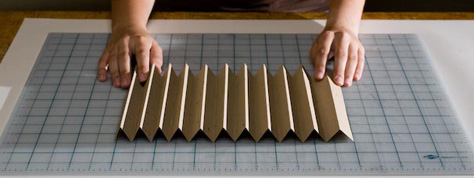
This is the basic approach for the concertina structure. It can be used as a support for sewing envelopes or folded pages or for using in a flag book. Conservation binders use thin paper to make small concertina pleats as a guard for the spine of a book. The concertina pleat has many uses. Smaller pleats can be trickier to fold if you need to make lots of them and hope they align. I will be happy to show you how to use the Vandercook Press to score lines for accurate folds.
Visit these photo galleries for ideas. Have fun.
Often when we are working in class, pulp looks like food. Jean Funcke has some pinkish pulp that is so similar to cake icing that I wish someone had brought a birthday cake to class. Let’s take a moment to review why we even took this photo.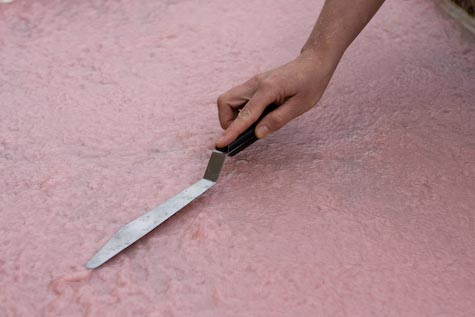 Continue reading…
Continue reading…
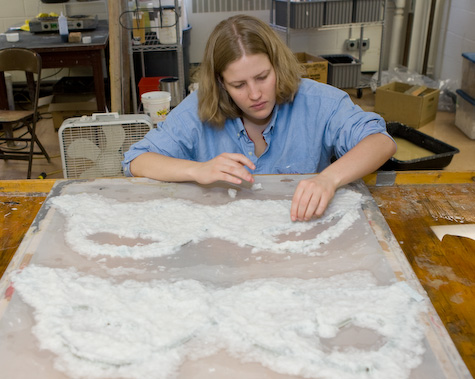
Patricia LaPointe is constructing an object out of cotton pulp and an underwire structure. First placing a “de-constructed brassiere” on synthetic silkscreen material and outlining the shape with wet cotton pulp, she builds her shape.
Continue reading…
Waverly Liu printed an etching plate on thin sheets of abaca paper. The etching plate of the figure is larger than the plate. Thin abaca paper holds up to the etching printing process which requires dampening and drying. The prints are not flat but have a nice texutre and hold a plate tone as as background tint.
In class, we discussed using Adobe CS3 Automated Web gallery creator script in Photoshop and Bridge. As I mentioned, you can use many programs to automatically generate web galleries from your image files. In my next post, I will list other programs. A program that I have been using for over a year is Adobe Lightroom. By far, this is one of the fastest ways to generate web galleries. Last week Adobe release a free Beta version to Lightroom version 2. You can download a copy from this link. You will need to create an account and agree to license terms. Once you do, you will see a link for a copy of the beta for Macintosh and for Windows machines. You may not have interest in the digital photo processing procedures of Adobe Lightroom, but while the Beta version is operational, you will have some very attractive web templates, that can be created easily. Let me know if you have questions or problems with the download or install.
Jean Funcke made an accordion book by couching two sheets of handmade paper with pieces of ribbon between the two sheets. Once the sheets have been dried, they can be folded to create an accordion book. Note the texture of the paper that she used. Her paper is a mix of cotton fiber and cooked straw.
Copyright © 2004–2009. All rights reserved.
RSS Feed. This blog is proudly powered by Wordpress and uses Modern Clix, a theme by Rodrigo Galindez.